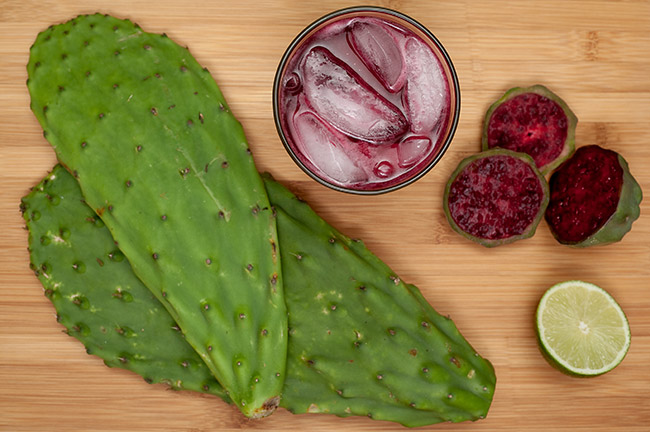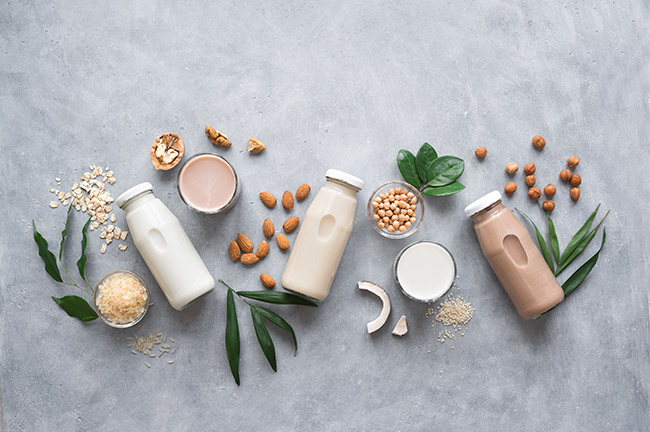Groups will see more food and beverage using CBD, plant-based protein and ugly produce next year, according to Benchmark’s recently released its Top Dining Trends for 2020.
The hospitality company, with 80 hotels, resorts and restaurants across the U.S. and internationally, surveyed its executive chefs and culinary experts to come up with its latest annual Top 10 list.
“More than recognizing trends, Benchmark properties are evolving food and beverage programming to not only remain relevant amid consumer demand but ensure we are operating responsibly,” says Olivier Gaupin, director of culinary operations for Benchmark.
Benchmark’s 2020 Dining Trends
1. The Notorious C.B.D.
The CBD food trend has exploded in the past year. Coffee shops and cafes in many American cities are now offering items infused with CBD oil, aimed at attracting customers interested in trying new eco-friendly, plant-based ingredients.
[Related Content: How Essential Oil Scents Can Transform Events]
Restaurants have also begun to incorporate the oil into their menus, both for drinks and food. CBD-infused drinks are becoming popular in the beverage market, including sparkling waters, coffees, teas, energy drinks, beer, wine and mixed alcoholic beverages.
2. The Incredible Sprouting Plant Ecosystem
More people are choosing to move away from beef, pork, and poultry on a regular basis and making a conscious decision to eat more plant-based foods in place of meat and dairy.
With the use of cooking and food invention meat and dairy flavors can be created using non-meat and non-dairy products like soy, peas, cashews and almonds.
In 2020, Benchmark expects this trend to grow rapidly.
This culminates from years of research and studies, to make plant-based food items equally delicious and as desirable as real meat and dairy products. The company predicts that in 2020, many restaurants will have a dedicated menu for plant-based food items.
3. Puffed the Magic Snack
Everyone knows that chips are an unhealthy snack option, but with new products on the snack food market, healthier chips are available. Ingredients like chickpeas, beets, quinoa and kale are going to satisfy snack cravings in 2020 and beyond.
[Related Content: Etch Your Attendees' Faces on Cookies]
4. Jackfruit
The newest go-to meat substitute is jackfruit.
Already being used as an alternative for barbecue pulled pork, jackfruit is a southeast Asian fruit that is a great source of iron, calcium and B vitamins. The texture of jackfruit mimics the texture of pulled pork and will soon become a force in the food industry as a meat alternative.
5. Fruit Forward
Among the usual sweet flavors found on beverage menus, unique fruit flavors, such as cactus, are taking mixology ideation by storm, according to Benchmark. More specifically, spiny cactus fruits such as prickly pear and dragon fruit are peaking consumer interest.

Prickly Pear Fruit Margarita Surround by Cactus Leaves, Prickly Pear and Lime
Prickly pears are a seeded fruit that yields an intensely flavorful ruby colored juice, while dragon is also attracting attention because of its sweet and sour flavor profile.
Other unique fruit flavor varieties, including bergamot orange, yuzu, calamansi, citron, makrut lime, pomelo, Meyer lemon, blood orange and ugli fruit (a Jamaican form of the tangelo) are also rising in popularity for food and beverage offerings.
6. Dairy Remix
Almond and soy milks are a thing of the past. Oat milk has emerged as the golden child of all the alternative milks. Especially enjoyable in coffees, baristas can barely keep it in stock.
So, it makes sense that companies are piggybacking off its success and launching other oat milk products as alternatives to dairy, to help minimize the environmental impacts associated with animal husbandry. Oat milk is also a great option for people with soy and nut allergies.

Various Vegas Plant-Based Milk Ingredients
7. Sparkling Results
Sparkling water demand is exploding, driven in part by consumers who are concerned about sugar but still looking to satisfy their craving for carbonation.
[Related Content: Sweet Cheeks Meats Owner Talks Sustainable Catering]
By ensuring diners—particularly younger influencers—know what new and exciting drinks are available, operators and planners can count on attracting these beverage consumers.
8. Bright & Bold
Benchmark believes that consumers are looking for bright, bold hues in terms of flavors and colors. Color generates emotional appeal with food—it may be as important as taste.
Planners take note: skilled food and beverage operators have an eye for what beverages succeed on social media, where color is critically important, looking for products that are “Instagram-friendly.” Color and functionality collide with ingredients such as blue algae, beet, matcha, butterfly pea flower tea.

Vegetarian Rice Paper Rolls With Peanut Sauce
9. More Traceability
As news about climate change, disappearing rainforests and plastic in the oceans dominate the news, consumers are demanding sustainability in all forms of packaging. Whether it’s swapping out Styrofoam and plastic for paper or bamboo, or buying ingredients from sustainable sources, sustainability will sweep the entire industry in 2020. The heightened focus on single-use plastics is not just a fad but a reality that goes beyond the purge of the plastic straw.
10. Ugly Produce
We know food waste effects people and the planet (its a hot topic at events). Yet, according to Benchmark, 40% of all the food produced in the U.S. goes uneaten because it is imperfect.
[Related Content: My Lunch With Tom Sietsema, Washington Post Food Critic]
Consumers are now accepting misshapen, bruised, and just down-right ugly foods as totally edible. Start-up food companies that send boxes of said fruit and vegetables directly to the customer’s home will encourage consumers to buy produce that is nutritious and tastes fine but is physically flawed in some way.
Restaurants and banquet menus will continue to see demands for less waste in 2020.
What This All Means for Meetings and Events
According to this release, it seems that the growing interest for plant-based foods, sustainable options and healthier alternatives will continue to grow in 2020. Planners can expect to see some, or all, of these trends crossover from restaurants to meetings and events.
[Read This Next: 9 Foods and Ingredients You Might See on Future Event Menus]







